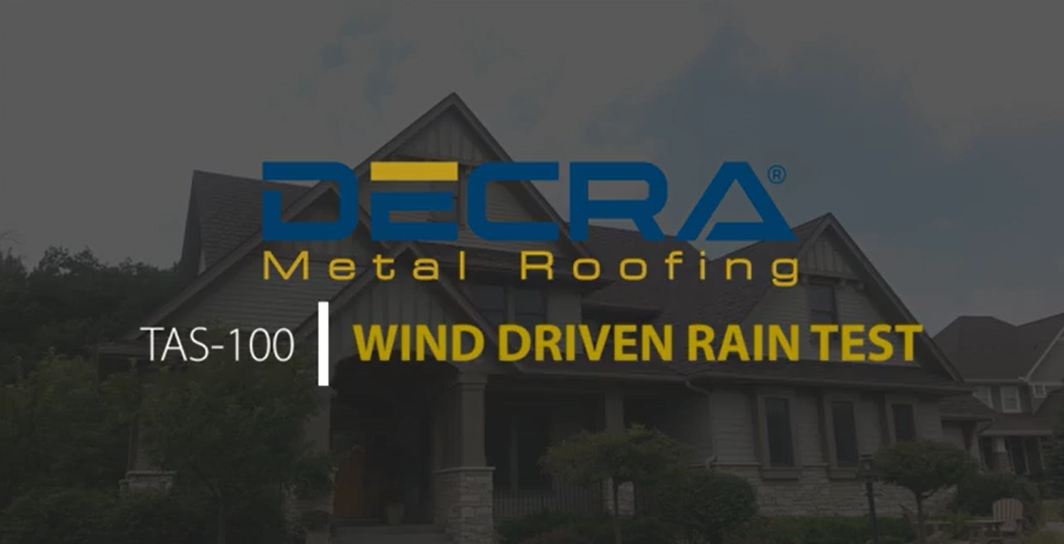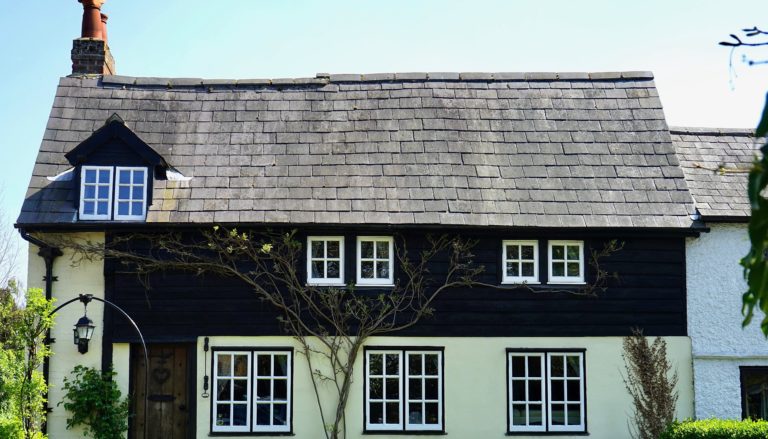Metal vs. Mother Nature: Wind-driven rain

Excerpts from an article by Jim Austin.
Metal roofing stands up to the forces of nature as well as or better than any type of roofing material and you should know how to sell that benefit to your customers.
Manufacturers like DECRA place a heavy emphasis on proper installation to prevent water infiltration even during the worst storms. They also subject their roofing systems to rigorous performance testing.
Leak is the original four-letter word in the roofing industry. You never want to hear the word leak in the same sentence with a roof you installed.
Odds are, the metal roofing systems you sell and install has endured testing, including how it stands up against wind-driven rain. As you know, the toughest tests are to meet Miami-Dade standards. The test for wind-driven rain is TAS-100.
“Meeting the specs of TAS-100 gets you approval to install the tested product into the high velocity hurricane zone (HVHZ) in south Florida,” says Chad Buhrman, Industry Manager — Roof Services at Architectural Testing Inc. “Being the most stringent dynamic water infiltration test for roof coverings, TAS-100 test results have been used outside of the HVHZ for marketing purposes by manufacturers.”
Buhrman says the test consists of water being directed at the roofing covering by a wind generator (right). Water is distributed over the roof covering at a rate of 8.8 inches of rain per hour. The test, which last 90 minutes, starts with equivalent winds of 35 mph, increasing to a top wind speed of 110 mph. The test is conducted at eight intervals with “rest stops” between each wind speed increase.
The test report includes a detailed description of the roofing system, including the underlayment, with failure characterized in two ways:
- Any test specimen which exhibits water infiltration through the sheathing shall be considered as failing the wind driven rain test.
- Any test specimen which has the prepared roof covering or any portion thereof blow off, tear or blow upward without reseating during the test shall be considered as failing the wind driven rain test.
Watch how this DECRA roof system stood up to the wind-driven rain test.
“A properly installed metal roof should not be affected by wind-driven rain,” says Jim Bush of ATAS International. “We’re installing a roof that we’re expecting to last 50 to 100 years so with our flashing details, we recommend a redundancy in waterproofing. Overkill is good. Anything can go wrong during an installation, so we recommend secondary waterproofing methods to account for any potential sins committed during installation. It’s a minimal expense when you’re talking about a $20,000 metal roof to spend another $200.”
It’s safe to say all manufacturers want you to install their products correctly. The testing they pay for helps establish the specifications. Take advantage of what your manufacturers have invested in.
Learn more about DECRA Roofing Systems at www.decra.com.























Comments
Leave a Reply
Have an account? Login to leave a comment!
Sign In